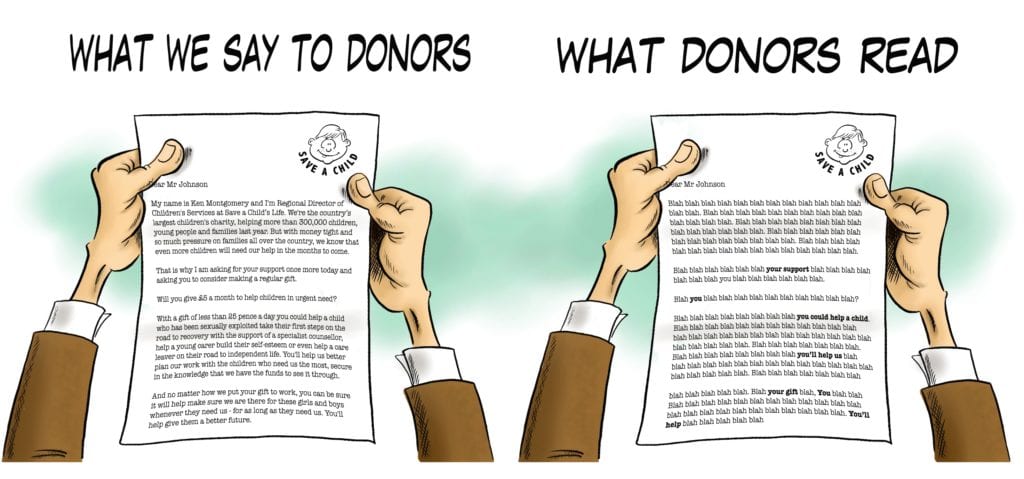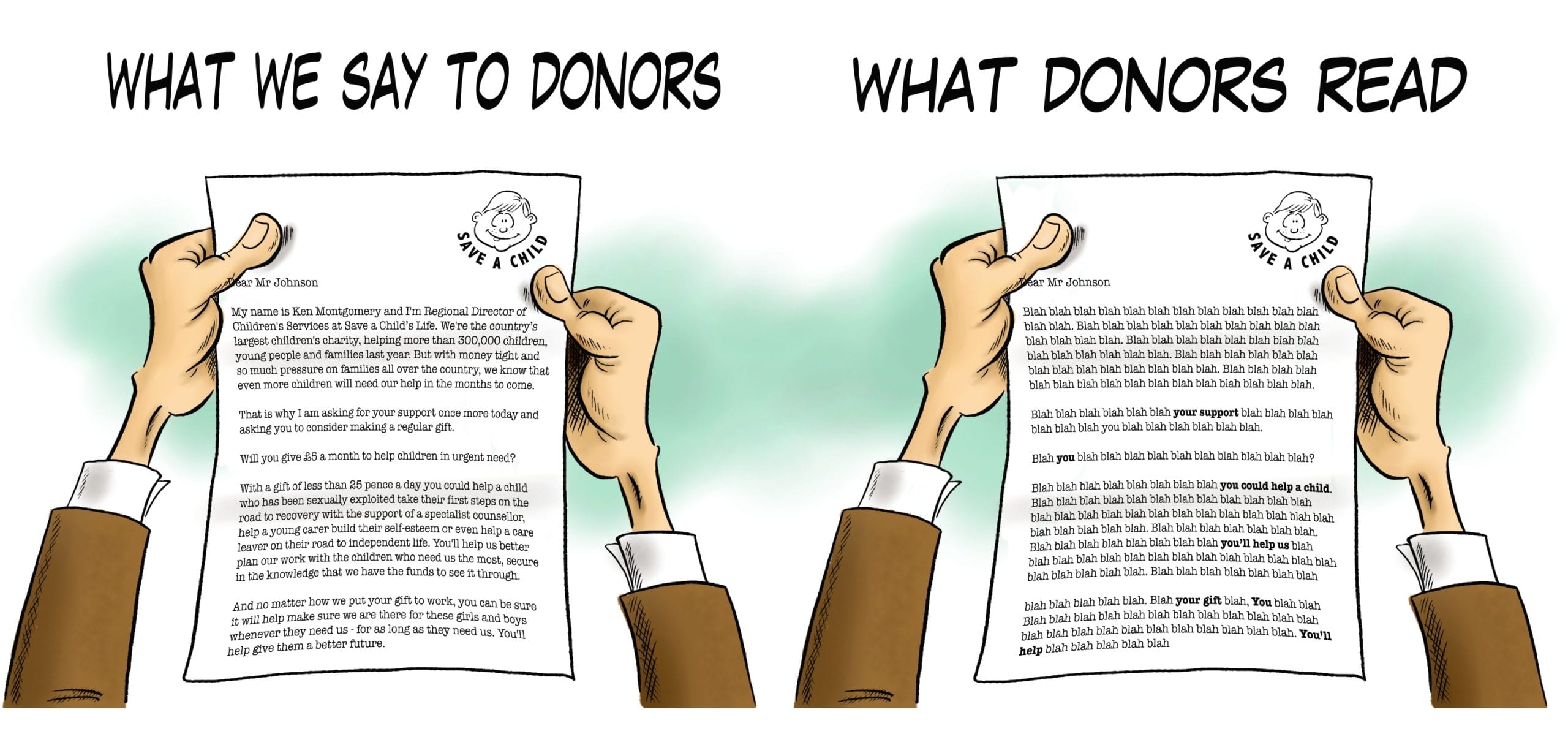What do donors actually read when you write to them?

There aren't too many fundraisers who can be unaware of the power of using YOU in copy.
One of my favourite fundraisers, Tom Ahern, gives the word central importance in his brilliantly effective Ahern Audit, with the famous You test.
But why does such a simple word make such a huge difference?
First off it's a placeholder for the reader's name that can be repeated without sounding weird. As such, the more you use the word You, the more personal your copy becomes. When you write You, you don't just write about your cause or the organisation you work for, you write about the person who makes your work possible – the donor.
And that offers something very important to anyone reading your copy.
It empowers them.
It moves your conversation from asking them to simply give, which – in the UK at least – can end up as a debate about how little they need to hand over (I'm talking about the £3 ask that finally seems to be slipping in to decline). Instead you get to the position where you are asking them to actually do something. And that is a far more exciting prospect.
When you GIVE, you hand something over. Whereas when you DO, you tackle a problem. And the donor who really wants to make a difference, definitely wants to achieve something. Using the word You imparts the feeling of a sense of achievement before the donation form is even completed.
But that's not all.
The other great thing about You is that it acts as a tiny starburst within your copy that can attract the reader's eye and answer the question, What do you actually need me to do?
So don't push the use of You down your page. Be proud of the fact that you recognise that your donor is really going to do the heavy lifting and give them credit for it. Get it in early and use it often.
That's when you and You can really make a difference.
Tags In
The Essentials

Crack the Code to Regular Giving: Insights, Strategies, and a Special Giveaway!

‘Tis Halloween. Keep to the light and beware the Four Fundraisers of the Apocalypse!

Why do people give? The Donor Participation Project with Louis Diez.

A guide to fundraising on the back of a postcard

What does the latest research tell us about the state of fundraising?






